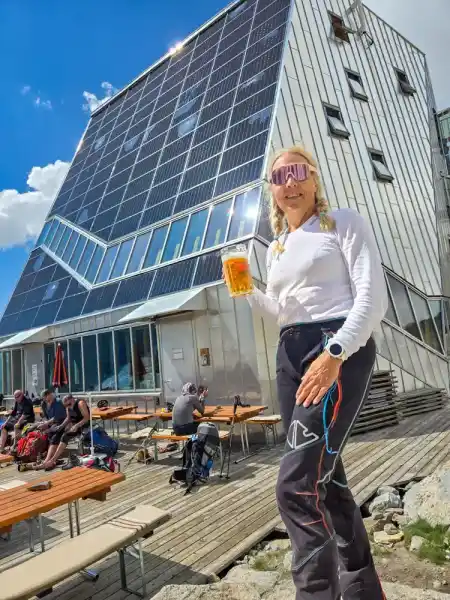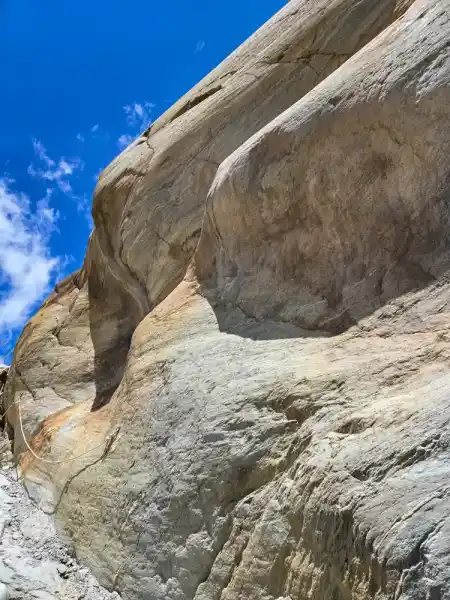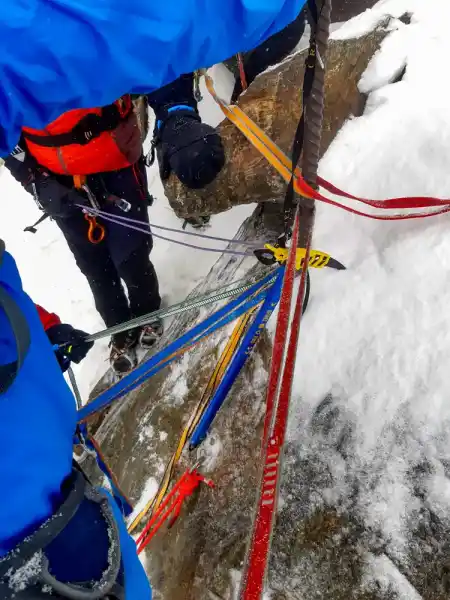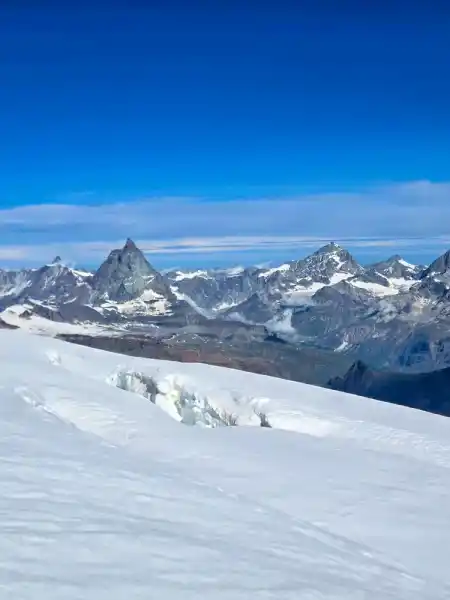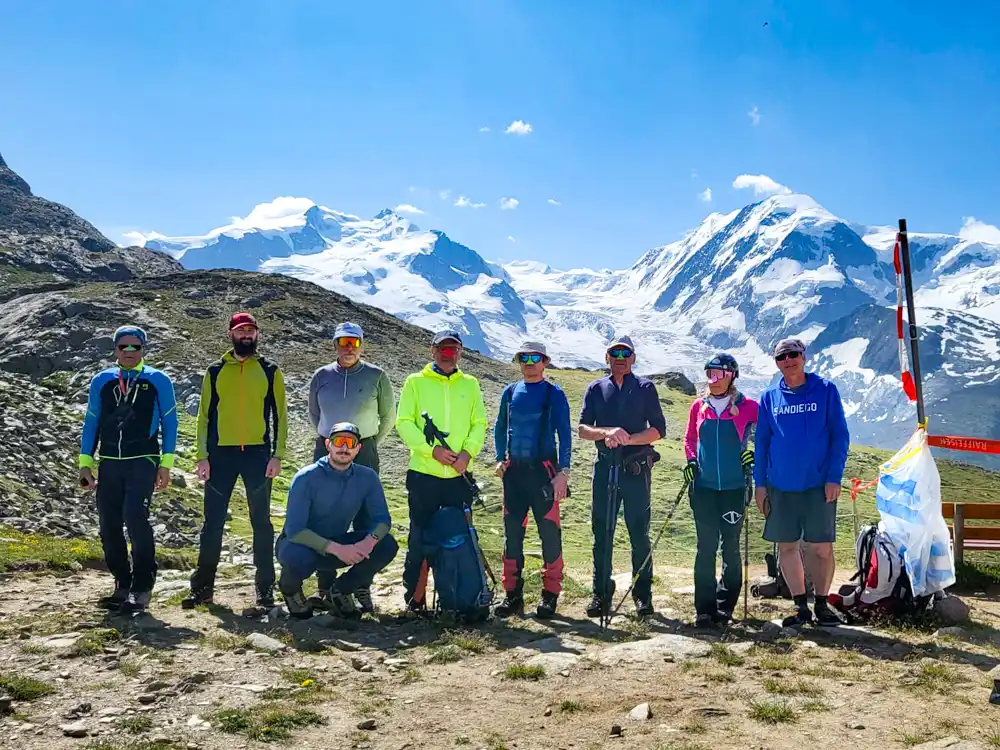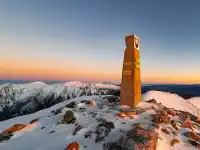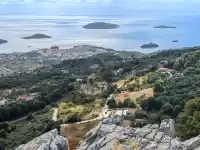What does it look like when a person fulfills their long-held dream? Climbing Dufourspitze & Matterhorn, bivouacs in the shadow of retreating glaciers and friends sharing one dream – this was our expedition around Zermatt.
Wallis Alps: Journey Between Glaciers and Legends
Saturday morning. Eight friends – Jano, Štefan, Milan, Tóno, Mišo, Marián, Martin Sr., Martin Jr., and I – arrive in two cars at the Randa campsite, near the famous Zermatt. Cars aren’t allowed into the town itself – it’s a rare example of eco-discipline that actually works. After grabbing our backpacks, we hop into a taxi toward the train station.
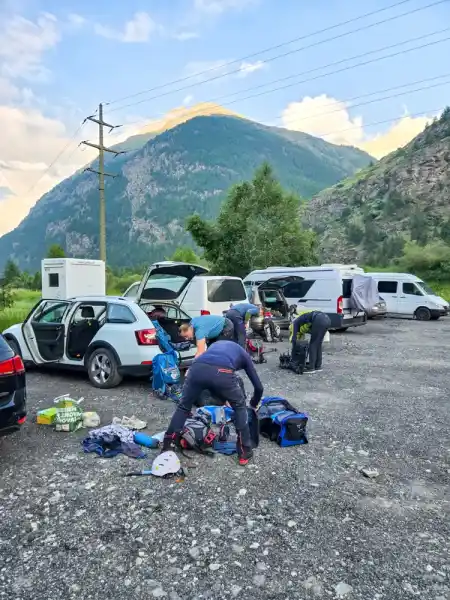
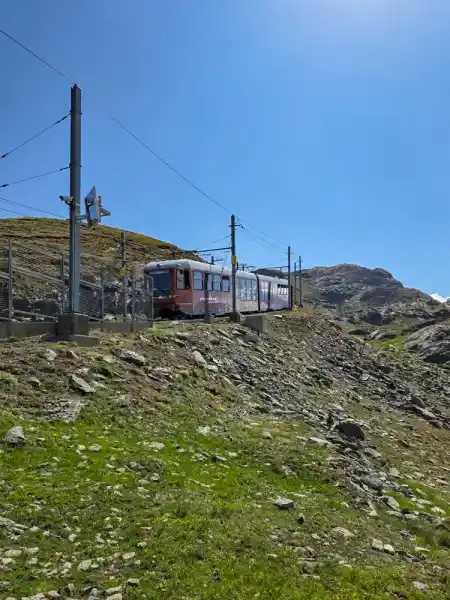
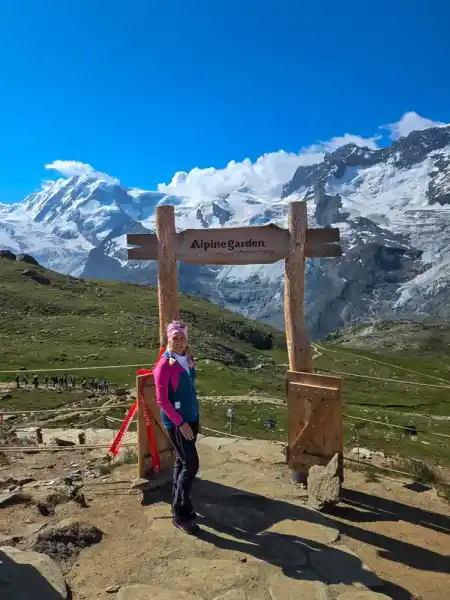
Zermatt feels like something between an alpine postcard and a film set. Everything is perfect, quiet – until you notice the distant glaciers, melting slowly, like ancient sighs of the planet.
We take the cog railway up to Gornergrat, and get off at Rotenboden. From there, the real hike begins – four hours over the Gorner glacier, crevasses yawning beneath us like ancient wounds. Over moraines and boulder fields, we finally climb to the Monte Rosa hut (2,883 m). Our legs are dead, but the views are pure reward. After dinner, we collapse into sleeping bags like rocks dropped from a ledge.
2 a.m. Wake-up Call: Headlamps, Ropes, and Dreams
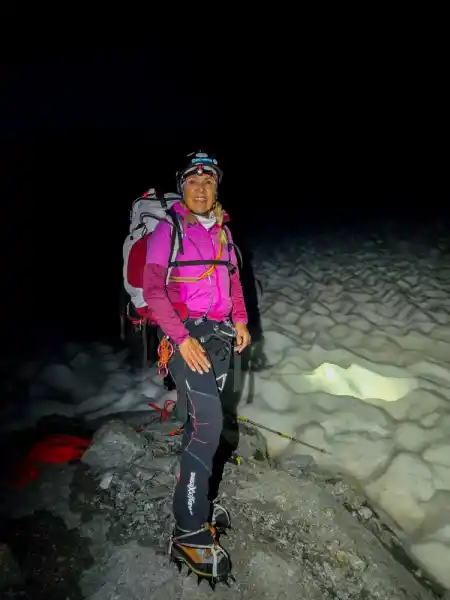
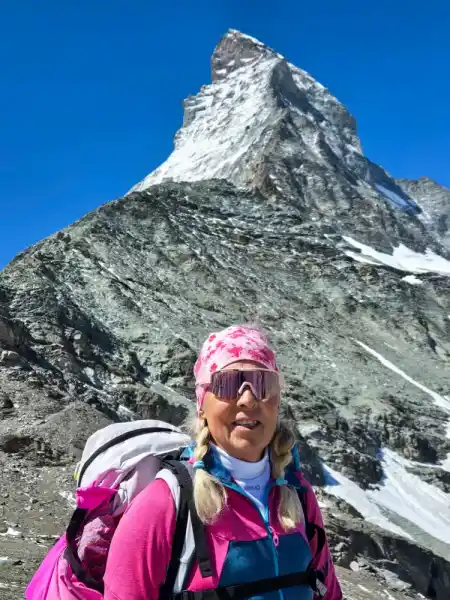
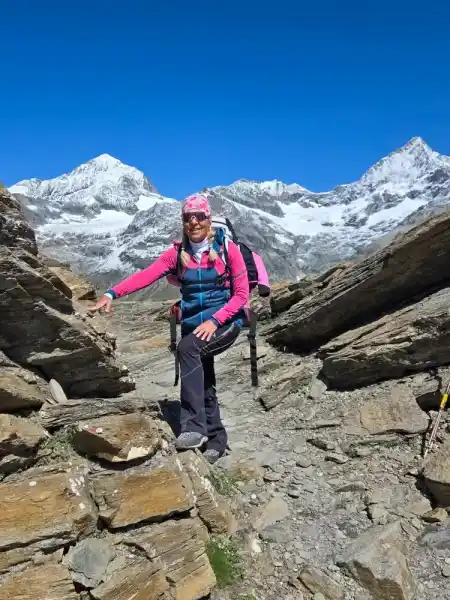
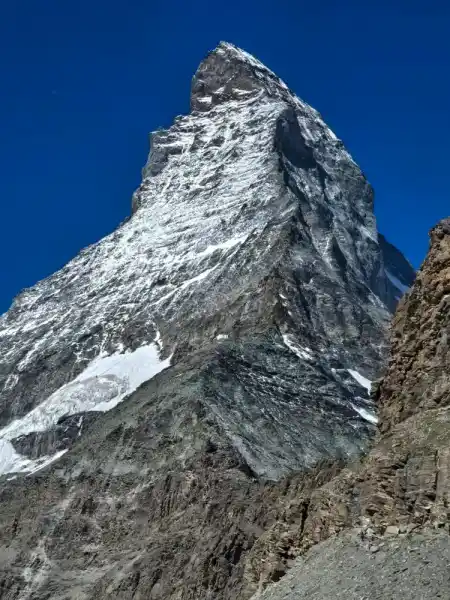
The next morning feels like something out of an alpine documentary. By 3 a.m., we’re moving. Darkness. Rocks turned to shadows. The sky undecided between night and dawn. We search for the path among cliffs, then rope up into trios – classic alpine style.
The group splits. Štefan and I stop at Sattel (4,300 m), a saddle high above the glacier. We sit, watch the Matterhorn catch the first light, and realize: some dreams don’t need a summit. The other seven push on. By nightfall, they reach Dufourspitze (4,634 m) and return after midnight, wrecked but victorious.
Crossing the glacier
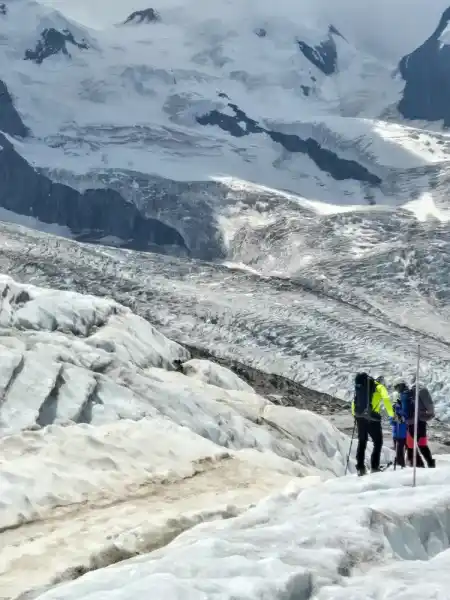

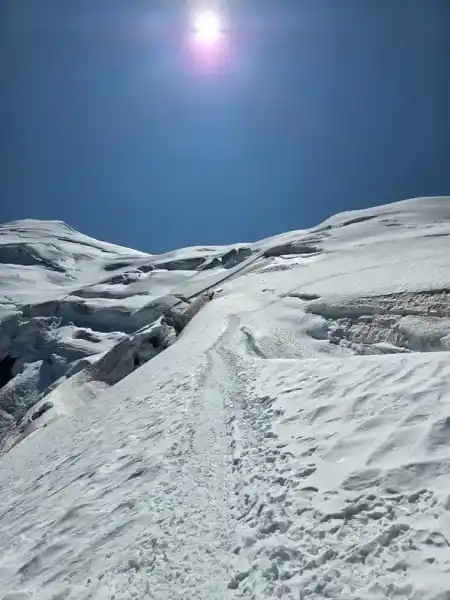
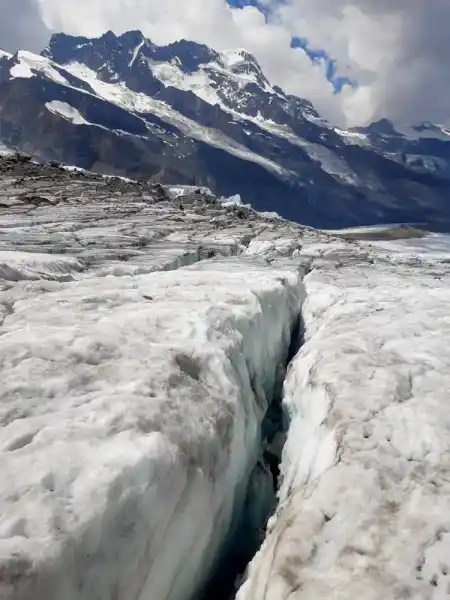
Second Chance Beneath the Icon
Descending via another route – more crevasses, more technical sections – we return to the Randa camp. At 1,600 m, the mornings are frosty and smell like instant coffee.
On Wednesday, we hike to the Hörnli hut (3,260 m), right beneath the iconic Matterhorn. Square, surreal, magnetic. Five friends go for the summit. Two – Mišo and Martin Jr. – succeed. Three are forced to turn back, just 100 meters from the top. The wind doesn’t do favors up there. Still, a beautiful effort.
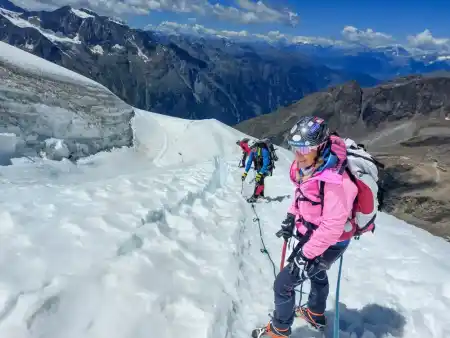
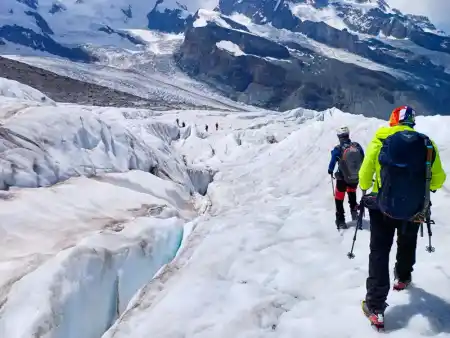
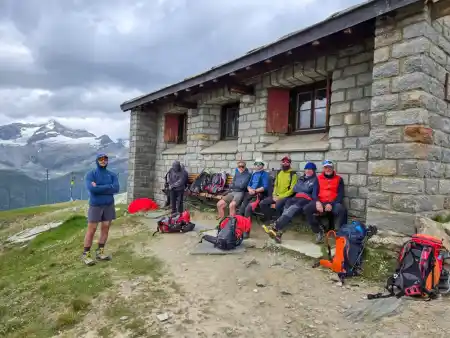
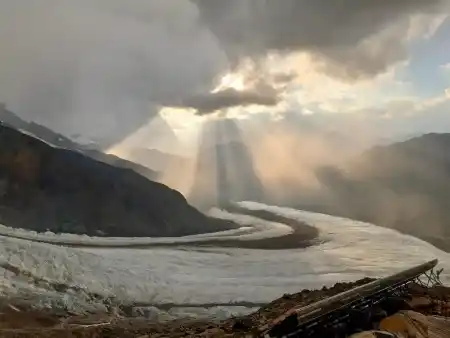
Weissmies: A White Basin of Ice and Breath
Friday. New day, new terrain. Štefan, Tóno, Milan, and I go for Weissmies (4,013 m). From Saas-Grund, a cable car takes us near the Trift glacier. Crampons, ropes, ice axes – the usual suspects. The climb is steep, the snow frozen hard. Crevasses lurk below. We reach the summit around 12:30 p.m. and descend quickly – the last cable car leaves at 4. It’s a demanding descent with slopes up to 45°. We make it, but our legs will talk about it tomorrow.
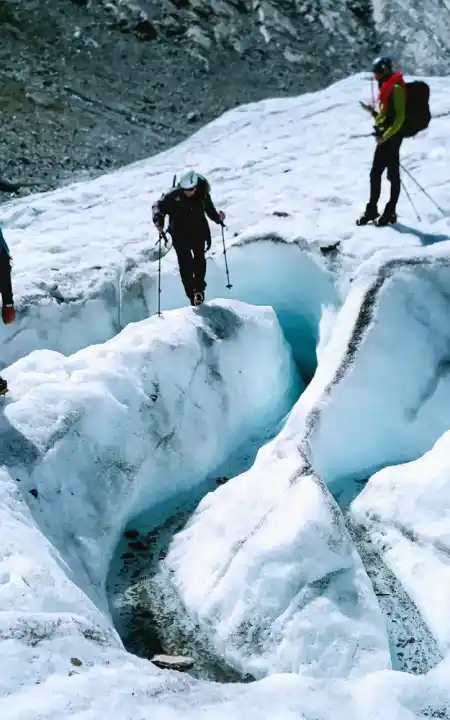
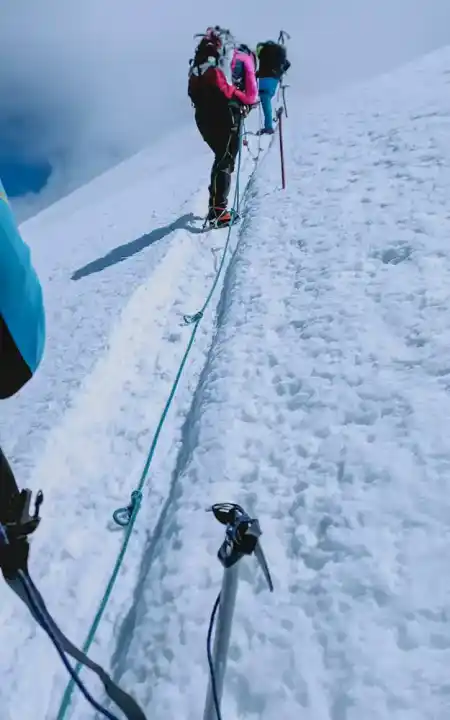
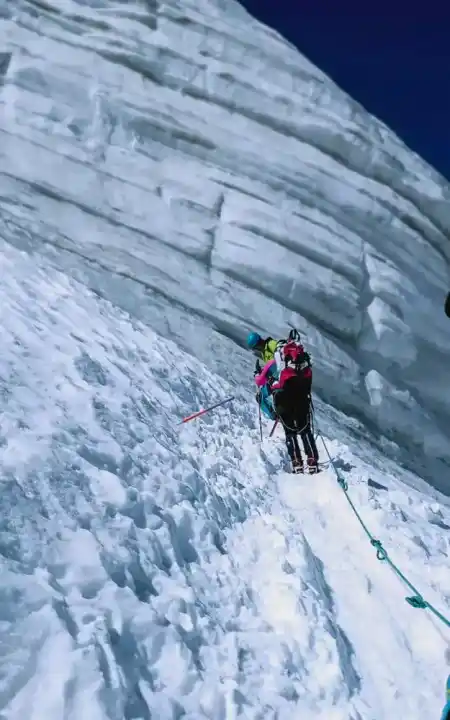
Melting Glaciers and Endings That Come Too Soon
Zermatt. Monte Rosa. Matterhorn. Weissmies. Names that might one day be just metaphors. The glaciers we crossed are receding fast – faster than most of us want to admit. Some say our children will still see icy Alps. Maybe. But likely not like we did. Will climbing Dufourspitze in twenty years even be possible without full-on rock gear?


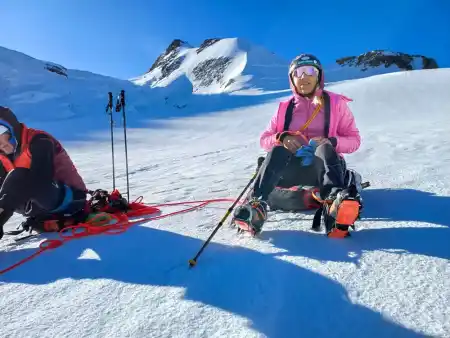
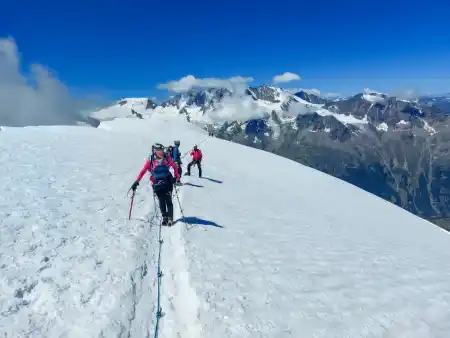
Practical Notes:
- Climbing Dufourspitze & Matterhorn, +4,000 m peaks requires fitness and endurance.
- Essential gear: winter clothing, crampons, trekking poles, ice axe, ropes, safety equipment, headlamp.
- Expect cold even in summer camps – a sleeping bag rated for below zero is a must.
Climbing Dufourspitze & Matterhorn is more than just a hike. It was a test of the team, the body, and reason. And a gentle reminder: nothing lasts forever – not ice, not illusions. But friendship and shared experience? Those might just outlast a melting world.
